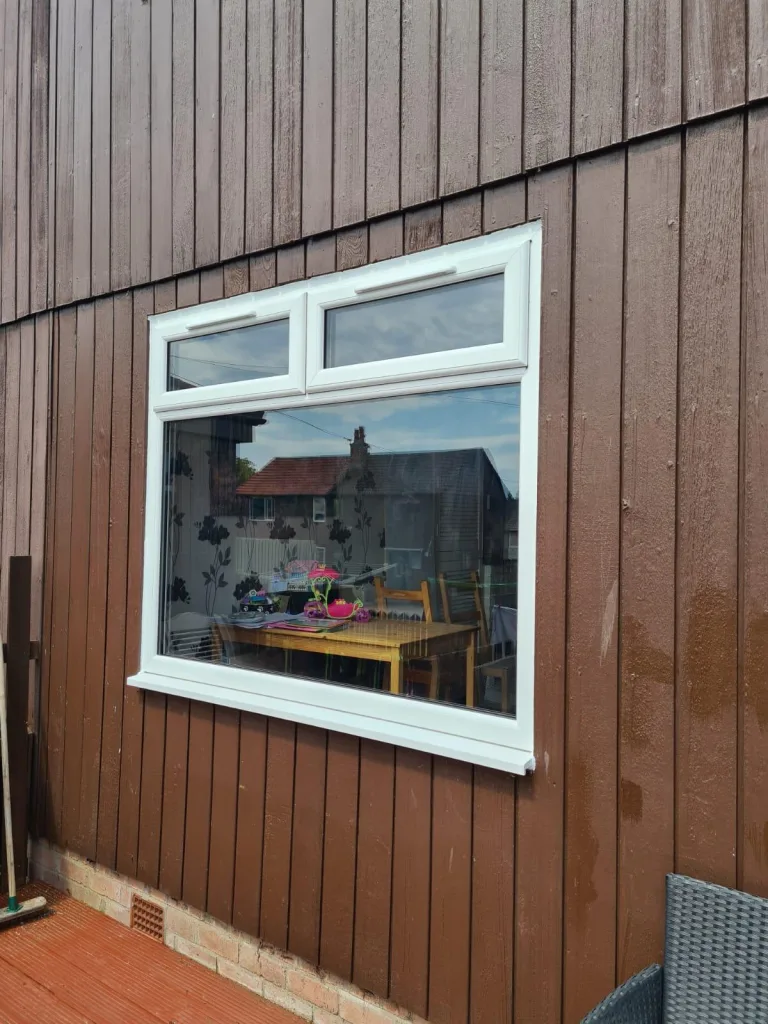Since ancient times, windows have been placed in homes for aesthetic purposes, allowing light and air into the house. Out of all the available types of windows, sliding sash windows stand out the most due to their practicality and ease of operation.
A sash window is a window where two sashes are mounted in a frame that slides vertically. In Glasgow, where the weather changes five times a day, a sash window with double-glazing is a complete savior.
Documents indicate that the use of sliding sash windows started in England in the 17th century. There’s some debate about when exactly it was invented, but it is said that its first use came about in the 1600s during the reign of King William III and Queen Mary II.
Many people believe that sash windows stem from Dutch architecture. This is on account of the fact that the Dutch were famed for their windows that, so to speak, let the Sun into the house owing to the large panes of glass set in a wooden frame. With time, this design evolved into the double-hung window.learn more about sash windows.
The first double sash windows came with a primitive mechanism. Unlike today, they were made of timber and had two sashes, which were the two moveable panels that could slide vertically. These sashes were positioned within a frame, and their bottom was held by a pulley and counterweight system.
The double sash windows with one moveable panel came with different design options. Users could now operate the window from the top, bottom, or side, which meant improved efficiency where ventilation was concerned. Muntins or glazing bars were frequently employed in the sashes as dividers or partitions within the glass.
Sliding sash windows are crafted from timber into frames, with glass panes divided into smaller sections and the signature sliding movement vertically.
Windows were built all through the Georgian era and symmetrically, with smaller panes divided and set in a six-over-six base. The period was known for elegance and unified focus, hence why Georgian sash windows are known for balance and frameworks devoid of excess detail.
The Victorian period moved into the 19th century, with the advancement of manufacturing technology, large glass panes became easier to make. This resulted in “two over two” sash windows being developed, which had two large panes for every sash.
With the invention of steam-powered machinery, the mass production of windows became easier, further lowering the cost of sliding sash windows for average homeowners.
Some of the key advancements included:
The onset of the 20th-century technological revolution brought with it new materials like aluminum and uPVC. They keep your home warmer in winter and cooler in summer—without much effort.
The timber was stunning but required regular upkeep. The transformation came with uPVC and aluminum framing, which offered cost-effectiveness, less maintenance, and resistance to rot and weather damage.
Double-glazing sash windows made it suitable even in colder regions and busy urban environments by significantly improving soundproofing and insulation.
You’ll also find cool upgrades like child-safety restrictors and smooth gliding action. Additionally, modern sash windows have also incorporated advanced locking systems, making them more practical than ever before.
Contemporary sliding sash windows revisit history while keeping up with modern technology. Most homeowners still prefer timber for its authentic look, but an increasing number choose uPVC versions for their ease of maintenance and cost-effectiveness.
Modern manufacturers offer a wide range of choices in:
Despite the rise of many modern window styles, sliding sash windows continue to be a favourite. Here’s why:

Sliding sash windows bring together history and modern comfort—it’s no wonder people still love them. From English Palaces in the 17th century to Glasgow and beyond, this design symbolized elegance and underwent various innovations.
Trade Upvc provideclassic design that made these windows iconic is preserved while modern technology improves their functionality, security, accessibility, and usability.
These are windows with one or more moveable panels that can be vertically positioned. It can be easier to operate a sash window because of better ventilation.
The Romans developed one of the first types of windows that had glass panes, and that is the sliding sash window. Windows as we know them today were invented in England in the 17th century.
A sliding sash window consists of primary components such as two sashes or frames containing the glass panels, pulleys, counterweights, and the window frame. Together, these parts allow the window to slide up and down for air circulation.
The defining features of traditional sash windows are glass panes subdivided into smaller sections with glazing bars, wooden frames, and a system of counterweights and pulleys.
Older styles of sash windows have been improved with modern materials such as aluminum or uPVC, double glazing, and advanced locking systems for better energy efficiency, strength, and security.
Old windows include casement windows, leaded windows, and sliding sash windows. Of these, sliding sash windows are the most popular because of their stylish design and practicality.
A sash window mechanism refers to the two movable sashes in a window’s timber frame that can slide vertically. These sashes are operated with a system of pulleys and counterweights.